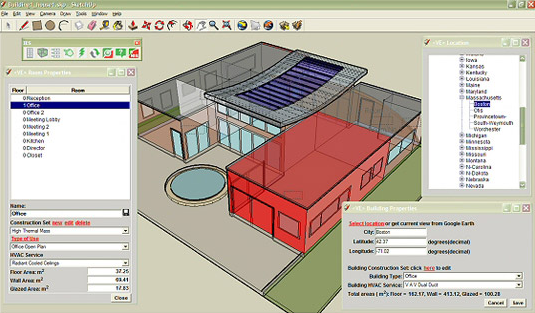Frequently Asked Questions
Quality Climate Control - Denver, Colorado
- How often should I maintain my equipment?
- What is a load or sizing calculation?
- How do I light my standing pilot?
- What is combustion air?
- What is SEER?
- What is the difference between R22 and R410A refrigerants?
- What does NATE certification mean?
- What is Clean Air Delivery Rate (CADR)?
- What are two-stage, multi-staged, and modulating systems?
- What is an energy model?
How Often Should I Maintain My Equipment?
As in the case of your furnace or air handler, Quality Climate Control recommends that you have a 20-point precision tune-up performed at least every other year. In the case of commercial equipment, you should have the equipment serviced EVERY year, as commercial products are worked much harder than residential equipment. This will include among other things a check of all safety controls, routine cleaning, and filter inspection. Filters themselves however should be changed at least every 90 days and in most cases more often. Read more about commercial air filtration or residential air quality.
Your air conditioning system is a bit more fragile and quite honestly more expensive to run and fix. We recommend that you get your air conditioner serviced annually which includes among other things cleaning your condenser coil, checking the charge of the unit, checking the condition of the evaporative coil, and inspecting the system filter. Cleaning of the condenser coil should not be taken lightly.
For humidification systems we recommend that you open and close your water valve at two points of the year. If this valve is left open we often find that it no longer works when we try to close it. Additionally you will find that the manufacturers recommendation is that you replace the pad annually. Quality Climate Control can sell and ship most humidifier pad replacements, to place an order Click Here.
To learn more about Service and Maintenance click for here commercial and here for residential.
What Is A Load Or Sizing Calculation?
A load calculation can come in many forms: a whole house calculation or Manual J, a duct sizing calculation or Manual D, or a commercial space calculation or Manual N, and so on.
The purpose of a load calculation is to take into account not only the square footage of a space but also many other factors. Some of the main factors are:
- The R-values of the insulation in the walls, floors, and ceilings.
- The size of the windows, which way they face, the amount of panes, and what materials they are constructed from.
- The appliances or equipment giving off heat.
- The amount of people in the space.
- The volume of the home.
- The air exchange rate.
For a sample load calculation pdf click here.
At Quality Climate Control we know from being connected to Carrier dealers worldwide that it is only a matter of time before Colorado, like many other states already are doing, will be required to run load calculations in order to obtain permits for installation. To bridge that gap to the future, provide peace of mind to you, and to insure we are installing the best system possible we perform load calculations along with every estimate standard at no charge!
Don’t take our word alone for it, look at what various 3rd party researchers have to say: Click here.
How Do I Light My Standing Pilot?
Often times we get calls from customers saying that their furnace is not heating the house. Many times it is simply and unlit pilot light. Lighting your pilot (if applicable) is a very simple thing to do and can save you the hardship of paying for a qualified service tech to perform something you can easily do on your own. The first thing we typically ask a customer is whether their pilot is electronic or a standing gas flame. First lets define the difference here.
Standing pilots have the following characteristics
- There will be both a ¼” thick silver line and an 1/8” thick copper line going from your gas valve to the burner section of your furnace
- The ¼” thick silver line is your pilots gas feed which should terminate with an open hole and is typically shielded by some sort of flame deflection
- The 1/8” thick copper line is your thermocouple. The purpose of the thermocouple is to sense flame. If it has become too corroded it will not sense flame and the pilot will keep going out. If this is the case call us immediately to remedy the situation or schedule an appointment online by Clicking Here.
What Is Combustion Air?
There are three elements to creating fire: oxygen, spark, and fuel. Since your furnace continually burns fuel (I.E. natural gas, oil, propane) it requires oxygen to keep aflame. Combustion air is a requirement from city ordinance (code may very from municipality to municipality) that states in most cases that you must supply at least one square inch of outside air per 5,000 BTUs of heat burned in your mechanical room. Additionally this air must be brought into your mechanical room and terminate twice no more than 4’ from your appliance: once at 12” below the top of the space and once 12” above the bottom of the space.
How to calculate need
Input BTU of water heater = 40k
Input BTU of furnace = 100k
Total BTU input of mechanical room = 140k
140k/5k = 28 square inches of combustion air needed both high and low
In most cases you will see (2) 6” pipes in your basement, one high and one low. Would 6” be adequate for this application? Lets see:
The formula for the area of a circle is Pi*Radius squared, so
(6/2) squared = 9
9 x 3.14 = 31.26 square inches
Since we only needed 28 square inches the combustion air would be adequate.
Beyond a simple city ordinance combustion air is a safety to you, your family, and your co-workers. Especially today as the structures built get of tighter and tighter construction, a building must breathe. If the building cannot pull combustion air from a properly vented mechanical room it will get air whatever way it can. Without the installation of combustion air you could possibly be pulling air down your flue pipe that is filled with carbon monoxide. Worse yet, gas-burning appliances depend on fresh air to burn fuel, if they do not get it the safety rating of the machine and its ability to hold carbon monoxide within the cabinet goes down. There have been many reports of people in tightly constructed homes or businesses with no fresh air inlets suffering from carbon monoxide headaches.
What Is SEER?
SEER stands for Seasonal Energy Efficiency Ratio. Put simply it is a comparison between how efficiently a refrigeration system can remove or provide heat to the electrical demand. The higher the SEER rating of your machine, the lower the electrical demand will be. The factory SEER rating on your machine is based on a brand new clean unit. As it becomes dirty, damaged, or neglected your SEER rating goes down, and your energy bill goes up.
What Is The Difference Between R22 And R410A Refrigerants?
There are actually a lot of differences between the two refrigerants. However, to simplify things we will compare how it affects the average air conditioning system. First R22 is a CFC or Chlorofluorocarbon, and R410A is a HFC or Hydro fluorocarbon. This doesn’t mean much to the average consumer but the reality is R410A is safer for our environment. Why? HFCs are less stable than CFCs, therefore as they escape into the atmosphere HFCs are prone to break apart before reaching the ozone layer, whereas CFCs will not break apart and can cause damage to the ozone layer.
Additionally, as part of the Montreal Clean Air Act (more can be read at http://en.wikipedia.org/wiki/Montreal_Protocol) the production of R22 will be banned and therefore only recycled and reused R22 will be available as of 2010. Only eight years ago (2004) R22 was selling on the retail end for $9 a pound with R410A at $45 a pound. Today (2007) R22 retails around $28 a pound and R410A retails around $38 a pound. As you can see R22 will become more expensive the farther we get from January 2010, and R410A will become more practical. For the savvy home owner selecting a system with R410A refrigerant will guard them against more costly air conditioning repairs in the future.
To read more about he performance differences between R22 and R410A refrigerant click on the following link: http://www.eurocooling.com/articler410a.htm
What Does NATE Certification Mean?
NATE is a very in-depth training for service personnel that not only tests the ability of their service repair knowledge but also conditions their work ethics, customer interaction, and etiquette. North American Technician Excellence (NATE,) headquartered in Arlington, VA., was founded in 1997 and is the nation’s largest non-profit certification organization for heating, ventilation, air conditioning and refrigeration technicians. NATE is the only technician certification organization governed, owned, operated, developed and supported by the HVACR industry.
What Is Clean Air Delivery Rate (CADR)?
The AHAM seal (usually found on the back of an air cleaner's box) will list three CADR numbers - one for tobacco smoke, one for pollen and one for dust. The CADR indicates volume of filtered air delivered by an air cleaner. The higher the tobacco smoke, pollen and dust numbers, the faster the unit filters the air.
What Are Two-Stage, Multi-Staged, And Modulating Systems?
System sizing is based on the hottest and coldest days of the year. Obviously the rest of the year that system will be oversized causing high energy bills and lower comfort. All multi-staged systems can basically work at lower percentages of total capacity to deliver more even comfort and significantly lower energy usage.
What Is An Energy Model?
An energy model is a virtual representation of your building or home. We gather many details about your building and use that to create a software simulation of the structure. This simulation will tell us all kinds of data about how much energy you use, how much you spend on energy, how often people are in the structure, the schedules they maintain, and how many of them there are. The picture below is an example of a typical energy model being created.

Call us now to learn how we insure the lowest cost for the BEST service!
720-323-2716
Fast! 24 Hour
Emergency Service Available
QCC - Quality Climate Control insures professional service technicians that will be Quick, Clean, and Colorado Certified.
 Our Master Designers are certified and trained in all aspects of HVAC systems for residential and commercial Heating and Cooling. We provide design for certified energy efficient heating and cooling systems. Our designers are experts in Manual J, S and D, with analysis that includes the system and how it relates to the building envelope.
Our Master Designers are certified and trained in all aspects of HVAC systems for residential and commercial Heating and Cooling. We provide design for certified energy efficient heating and cooling systems. Our designers are experts in Manual J, S and D, with analysis that includes the system and how it relates to the building envelope.
contact us...
Customer Testimonials
Here are some customer comments regarding QCC's on-the-job performance:
"[A technician] talked me through the furnace & thermostat wiring over the phone. Another [company] said they'd get back to me and didn't, and a third [company] told me my furnace was too old to have the fan run separately without even seeing it! He was wrong and I'm glad I didn't listen!" - Denver, CO
read more...
